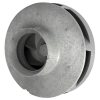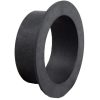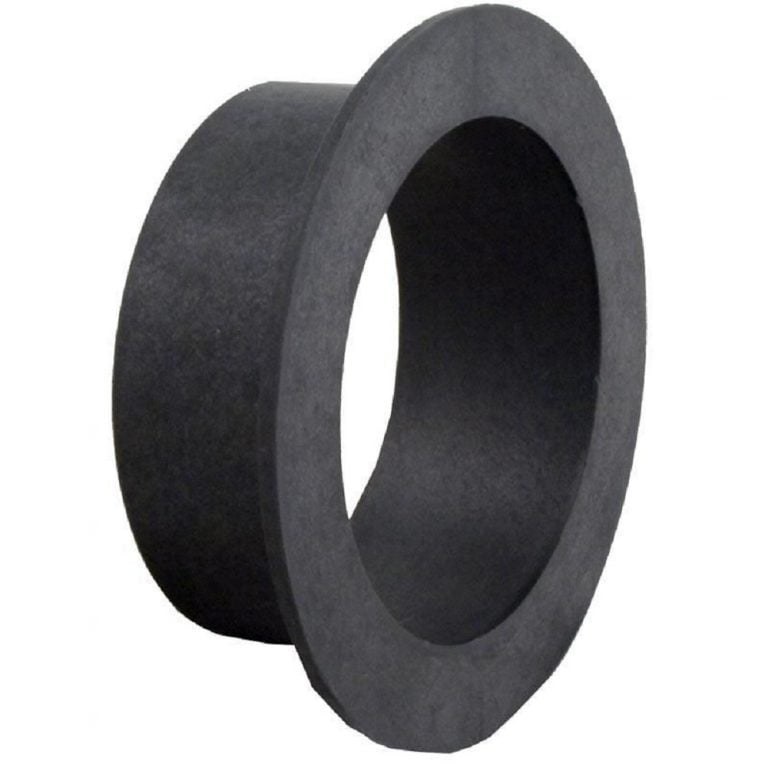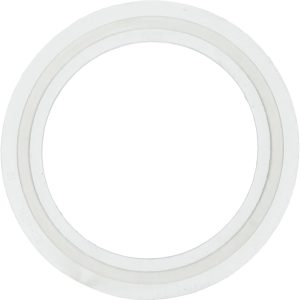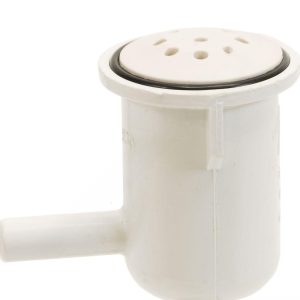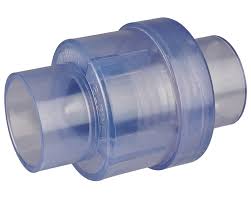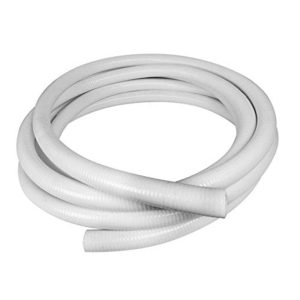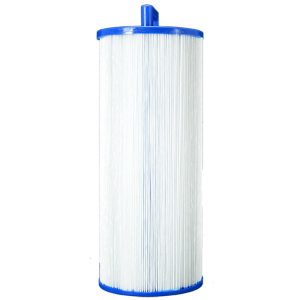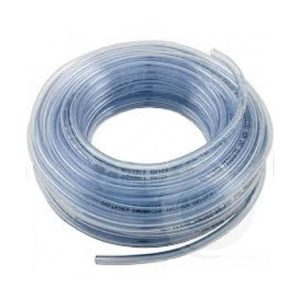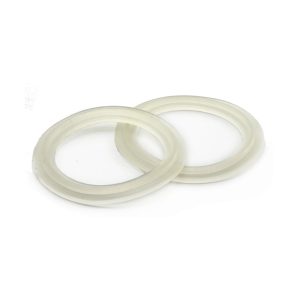Wear Ring for 1,2 and 3HP Impeller 48/56 Frame
£6.89 Inc VAT
Out of stock
Want to be notified when this product is back in stock?
Waterway Executive Euro 48/56 Frame Wear Ring: Essential for Peak Performance
Introduction
As a dedicated supplier of hot tub spare parts, I’m excited to offer you the Waterway Executive Euro 48/56 Frame Wear Ring. This crucial component is designed to enhance the performance and longevity of your 1, 2, and 3 HP pumps. Let me walk you through why this wear ring is a must-have for your hot tub maintenance toolkit.
What is a Wear Ring?
A wear ring, also known as a wear plate or casing wear ring, is a vital component in centrifugal pumps. It’s designed to minimize recirculation between the suction and discharge sides of the impeller, ensuring optimal pump efficiency and performance.
Key Benefits
1. Improved Pump Efficiency
By maintaining proper alignment of the impeller, this wear ring helps your pump operate at peak efficiency. This means less energy consumption and potentially lower electricity bills for you.
2. Extended Pump Life
The wear ring acts as a sacrificial component, protecting more expensive parts of your pump from wear and tear. By replacing this affordable part regularly, you can significantly extend the life of your pump.
3. Consistent Water Flow
A well-maintained wear ring ensures consistent water flow in your hot tub, providing you with the relaxing experience you deserve.
Product Specifications
Here’s a detailed look at the specifications of this high-quality wear ring:
| Specification | Detail |
|---|---|
| Product Type | Wet end wear ring |
| Manufacturer | Waterway250 |
| Color | Black |
| Material | Plastic |
| Compatible Pump Models | Waterway Executive Euro 48/56 frame |
| Horsepower Compatibility | 1, 2, and 3 HP |
| Function | Impeller alignment during high-speed rotation |
Why Choose This Wear Ring?
- Perfect Fit: Designed specifically for Waterway Executive Euro 48/56 frame pumps, ensuring compatibility and optimal performance.
- Durable Construction: Made from high-quality plastic, this wear ring is built to withstand the demanding environment of your hot tub pump.
- Easy Installation: With its precise dimensions, this wear ring is straightforward to install, making maintenance a breeze.
- Cost-Effective: By replacing this wear ring regularly, you can avoid more costly repairs down the line.
Installation Tips
While installation is generally straightforward, here are a few tips to ensure you get the best performance from your new wear ring:
- Always turn off and disconnect power to your pump before beginning any maintenance.
- Clean the pump housing thoroughly before installing the new wear ring.
- Ensure the wear ring is seated properly to avoid misalignment issues.
- If you’re unsure about any step of the process, don’t hesitate to consult a professional.
Conclusion
Maintaining your hot tub doesn’t have to be a chore. With the right parts, like this Waterway Executive Euro 48/56 Frame Wear Ring, you can keep your system running smoothly and efficiently. Remember, regular maintenance not only extends the life of your equipment but also ensures you get the most enjoyment out of your hot tub experience.
Invest in the health of your hot tub today with this high-quality wear ring. Your pump (and your relaxation time) will thank you!
What is a Pump Impeller?
A pump impeller is a crucial component of a centrifugal pump, including those used in hot tubs and spas. Its primary function is to move water or other fluids within the pump system. Here's how it works:
-
Blades or Vanes: The impeller consists of curved blades or vanes that are attached to a central hub. These blades can vary in number and design depending on the specific pump's intended use and performance requirements.
-
Rotation: The impeller is mounted on a shaft connected to an electric motor, which provides the rotational power. As the motor spins the shaft, the impeller also rotates.
-
Fluid Movement: When the impeller spins, it generates a centrifugal force that propels the fluid, in this case, water, from the center of the impeller to its outer edges. This action creates a low-pressure area at the center (suction side) and a high-pressure area at the outer edges (discharge side) of the impeller.
-
Suction and Discharge: The water is drawn into the pump's inlet (suction side) and passes through the impeller. The rapidly spinning blades push the water outward, increasing its kinetic energy and pressure. This high-pressure fluid is then discharged through the pump's outlet to the desired location, such as jets in a hot tub.
The impeller's design, size, and materials can vary, depending on the pump's intended application and capacity. In hot tubs and spas, the impeller's role is to circulate water through the system, ensuring proper filtration, heating, and jet propulsion. Over time, impellers can wear or become damaged, and they may need to be replaced to maintain the pump's efficiency and water circulation in the hot tub.
How do I know when I need to replace an Impeller?
Determining when to replace a pump impeller in your hot tub can be based on a few key signs and symptoms. Here are some common indicators that it may be time for impeller replacement:
-
Reduced Water Flow: If you notice a significant reduction in the water flow or a decrease in the power of your jets, it could indicate an issue with the impeller. Reduced water flow can impact the overall performance and enjoyment of your hot tub.
-
Strange Noises: Unusual noises, such as grinding, rattling, or squeaking sounds coming from the pump, might indicate that the impeller is damaged or worn. If you hear these noises, it's a good idea to investigate and potentially replace the impeller.
-
Leaking Pump: A leaking pump can be a sign of a damaged impeller or a worn-out pump seal. If you observe water leaking from the pump area, it's essential to check the impeller's condition and replace it if necessary.
-
Overheating: An overheating motor can result from reduced water flow caused by a problematic impeller. If you notice the motor running hotter than usual or shutting off due to overheating, inspect the impeller for damage.
-
Inefficient Water Circulation: Insufficient water circulation can lead to water quality issues in your hot tub, such as poor filtration and uneven heating. If you observe these problems, a worn or damaged impeller could be the culprit.
-
Visible Damage: If you can see physical damage to the impeller, such as broken or bent blades, cracks, or wear, it's a clear sign that it needs replacement. Visual inspection is a straightforward method for assessing impeller condition.
-
Regular Maintenance: As part of your regular hot tub maintenance routine, consider checking the impeller during scheduled servicing. Over time, impellers may accumulate debris or wear naturally, so inspecting and cleaning them can prevent more severe issues.
Replacing a damaged or worn impeller promptly is essential to maintain the proper functioning of your hot tub's pump and to ensure that water is circulated effectively. If you notice any of the above signs, it's a good idea to consult your hot tub's user manual or contact a professional technician to assist with the replacement process.
How can I select the correct impeller for my pump?
Selecting the correct impeller for your pump is crucial to ensure optimal performance and water circulation in your hot tub. Here are the steps to help you choose the right impeller:
-
Identify Your Pump Model: First, you need to know the make and model of your hot tub's pump. This information is typically located on the pump's housing or in the user manual. You can also check for a nameplate or label that provides details about the pump.
-
Check the Impeller Type: There are different types of impellers, such as closed-face impellers, semi-open impellers, and open-face impellers. The type you need depends on your pump's design. Make sure to select the impeller type that matches your existing impeller.
-
Determine the Impeller Size: Impellers come in various sizes, which are typically specified by their diameter (e.g., 3 inches, 4 inches). Measure the diameter of your current impeller to ensure you get the right size. If the impeller is damaged or missing, you may need to consult your pump's manual or contact the manufacturer for the correct size.
-
Material Compatibility: Impellers can be made of different materials, including plastic, brass, and stainless steel. The material choice may depend on the pump's design and your water chemistry. Ensure that the new impeller's material is compatible with your specific pump and hot tub environment.
-
Flow Direction: Impellers are designed to rotate in a specific direction (usually clockwise or counterclockwise). Confirm the flow direction of your old impeller and select a replacement that matches this direction.
-
Consult the Manufacturer: If you're uncertain about which impeller to choose, don't hesitate to reach out to the pump or hot tub manufacturer. They can provide guidance on the correct impeller for your pump model.
Choosing the correct impeller is vital for maintaining your hot tub's performance and ensuring efficient water circulation. Taking the time to identify the right impeller based on your pump's specifications will help prevent issues and prolong the life of your hot tub system.
Related products
Plumbing and Other
Air Jets and Jet Parts
Plumbing and Other
Plumbing and Other
Air Jets and Jet Parts
Filters
Plumbing and Other
3/8 inch vinyl air pipe (per metre) (PLEASE SEE ADDITIONAL NOTES)
Plumbing and Other

